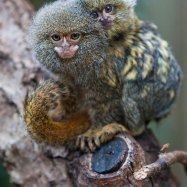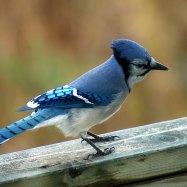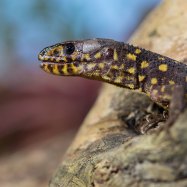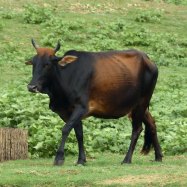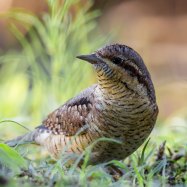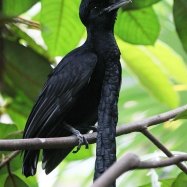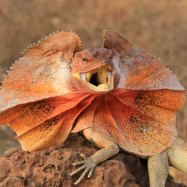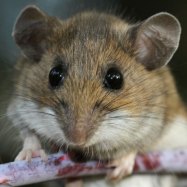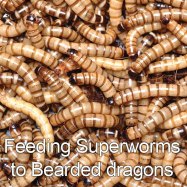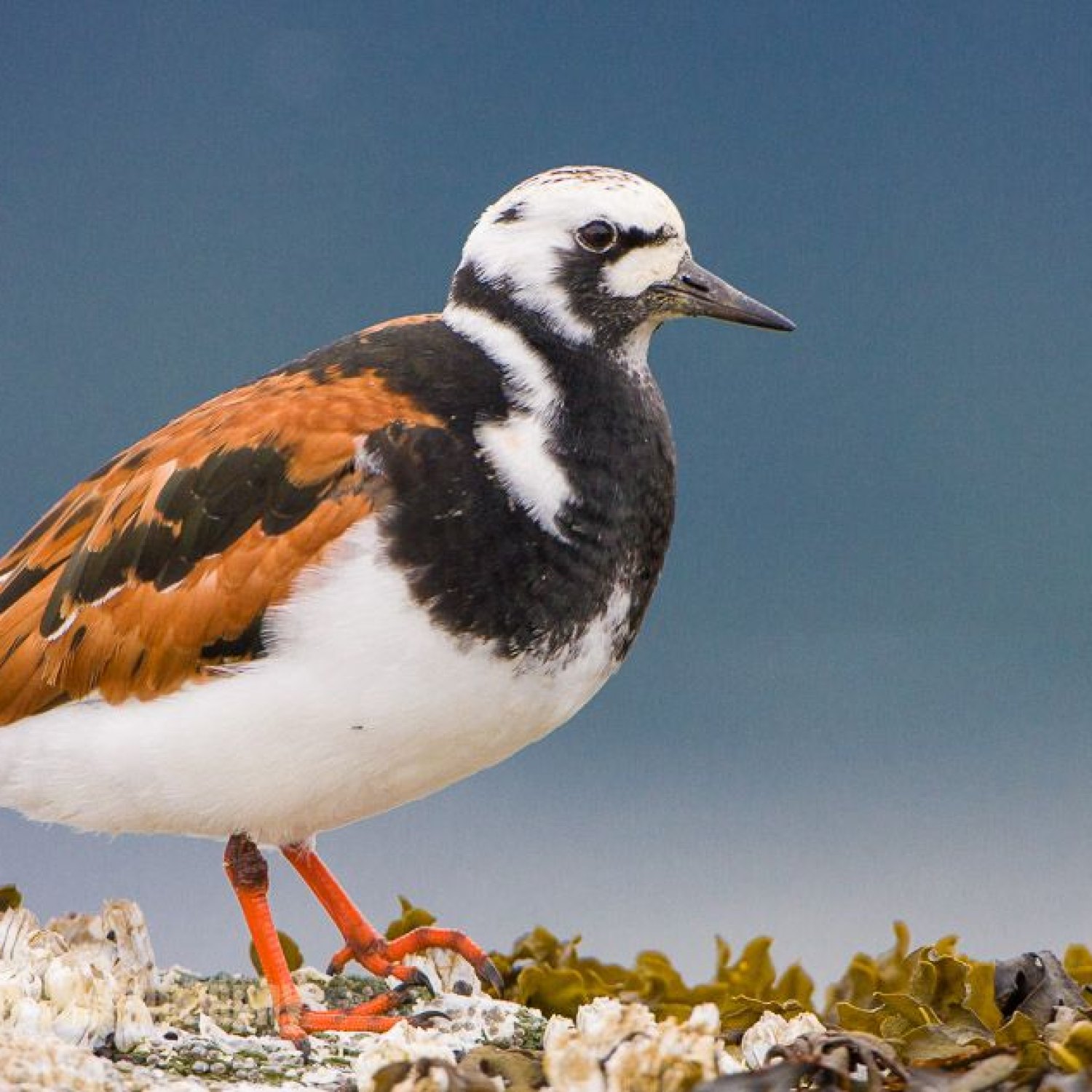
Ruddy Turnstone
20-25 cm
The Ruddy Turnstone is a small yet sturdy bird, growing up to 20-25 cm in length. With its compact and stocky body, this member of the Scolopacidae family is known for its striking reddish-brown and black plumage. While their specific location is not specified, these birds can be found in coastal areas all around the world, making them a unique sight to behold. #RuddyTurnstone #CoastalBirds
Animal Details Summary:
Common Name: Ruddy Turnstone
Kingdom: Animalia
Habitat: Coastal areas, rocky shores, mudflats, beaches
The Fascinating World of the Ruddy Turnstone: A Versatile Coastal Bird
Have you ever taken a walk along the beach and noticed a small bird with bold and varied plumage scurrying along the shoreline? Meet the ruddy turnstone, a compact and stocky coastal bird that is both fascinating and versatile in its habitat and behavior.The Scientific Classification of the Ruddy Turnstone
The scientific name of the ruddy turnstone is Arenaria interpres. It belongs to the animal kingdom, phylum Chordata, and class Aves, which includes all birds. It is part of the order Charadriiformes, which consists of wading and shorebirds Ruddy Turnstone. The ruddy turnstone belongs to the family Scolopacidae, which comprises sandpipers, snipes, and phalaropes.The Natural Habitat of the Ruddy Turnstone
The ruddy turnstone has a wide geographical distribution and can be found in coastal areas, rocky shores, mudflats, and beaches. They can be found in North and South America, Europe, Africa, Asia, and Australasia. These birds are migratory, and they travel great distances to breed and feed in different parts of the world.Feeding Habits
The ruddy turnstone is an omnivorous bird, which means it consumes both animal and plant matter. Its unique feeding method has earned it the nickname "turnstone." They flip over stones, shells, and seaweed to find invertebrates such as insects, crabs, mollusks, and worms. They also feed on plant matter, including seeds, berries, and algae.Interestingly, ruddy turnstones also have a symbiotic feeding relationship with other species Regal Jumping Spider. They are known to follow other birds like gulls and plovers to scavenge for scraps of food. This behavior is called "kleptoparasitism," where the turnstone steals food from other birds.
Physical Characteristics of the Ruddy Turnstone
As their name suggests, ruddy turnstones have a ruddy or reddish-brown coloration on their feathers. However, their overall appearance can vary greatly depending on their age, sex, and breeding season.In the breeding season, male turnstones have a black head and breast, while females have a chestnut-brown head and upperparts. During the non-breeding season, both males and females have a lighter brown coloration.
One of the most striking features of the ruddy turnstone is its bill. It is short, thick, and slightly upturned, making it perfect for flipping stones and probing for food. Their legs are also relatively short, which helps them to move quickly on the rocky shoreline.
These birds measure between 20-25 cm in length, and their wingspan can reach up to 50 cm. They are compact and stocky, which allows them to withstand strong coastal winds and waves.
Breeding and Nesting Behavior
During the breeding season, ruddy turnstones gather in large flocks on coastal islands and tundra areas. They form monogamous pairs, and both male and female participate in selecting a nesting site and building a nest.The female will lay a clutch of 3-5 eggs, which are incubated for 22-24 days. Once the eggs hatch, both parents take turns caring for the chicks, which are able to walk and forage for food immediately.
Unlike other birds, ruddy turnstones do not build extravagant nests. Instead, they scrape a small depression in the ground and line it with grass and twigs. This simple nest is well-camouflaged, making it difficult for predators to spot.
The Versatility of the Ruddy Turnstone
One of the most remarkable things about ruddy turnstones is their incredible adaptability. As mentioned earlier, they have a wide range of habitats and can travel long distances, making them a truly cosmopolitan bird.They also have a unique survival strategy that has seen them thrive even in harsh environments. During low tide, they forage on the rocky shoreline, and during high tide, they move inland to feed on fields and meadows. This flexibility in feeding and habitat has helped them survive and thrive in a rapidly changing environment.
Threats to the Ruddy Turnstone
Despite their adaptability, ruddy turnstones still face several threats that put their survival at risk. Habitat loss due to coastal development and pollution is one of the major threats faced by these birds. Climate change and rising sea levels also pose a significant threat to their breeding and nesting grounds.Additionally, accidental entanglement in fishing nets and hunting in some parts of the world also contribute to the decline of ruddy turnstone populations.
Conservation Efforts
Fortunately, efforts are being made to protect and conserve the ruddy turnstone and its habitats. Organizations such as the National Audubon Society and the International Union for Conservation of Nature (IUCN) monitor their populations and advocate for their conservation.Many countries have also designated important coastal areas as protected areas, where ruddy turnstones and other shorebirds can feed and breed safely. These efforts have helped increase their populations in some regions, but more needs to be done to ensure their long-term survival.
The Role of the Ruddy Turnstone in Ecosystems
Like all animals, ruddy turnstones play a crucial role in maintaining the balance of their ecosystems. As scavengers, they help keep beaches clean by consuming dead and decaying matter. They also play a significant role in controlling insect populations and dispersing plant seeds.Moreover, ruddy turnstones also serve as indicators of the health of their habitats. Changes in their populations can signal the decline of their habitats and the need for conservation efforts.
Conclusion
In conclusion, the ruddy turnstone is a fascinating and versatile coastal bird that has captured the hearts of many bird lovers. From its unique feeding habits to its adaptability and important role in ecosystems, this bird is truly remarkable. However, the threats it faces serve as a reminder of the need to protect and conserve our natural world and all its inhabitants. So, the next time you take a walk on the beach, don't forget to keep an eye out for this beautiful and resilient coastal bird, the ruddy turnstone.

Ruddy Turnstone
Animal Details Ruddy Turnstone - Scientific Name: Arenaria interpres
- Category: Animals R
- Scientific Name: Arenaria interpres
- Common Name: Ruddy Turnstone
- Kingdom: Animalia
- Phylum: Chordata
- Class: Aves
- Order: Charadriiformes
- Family: Scolopacidae
- Habitat: Coastal areas, rocky shores, mudflats, beaches
- Feeding Method: Omnivorous
- Geographical Distribution: North and South America, Europe, Africa, Asia, Australasia
- Country of Origin: Not specified
- Location: Not specified
- Animal Coloration: Varied
- Body Shape: Compact and stocky
- Length: 20-25 cm
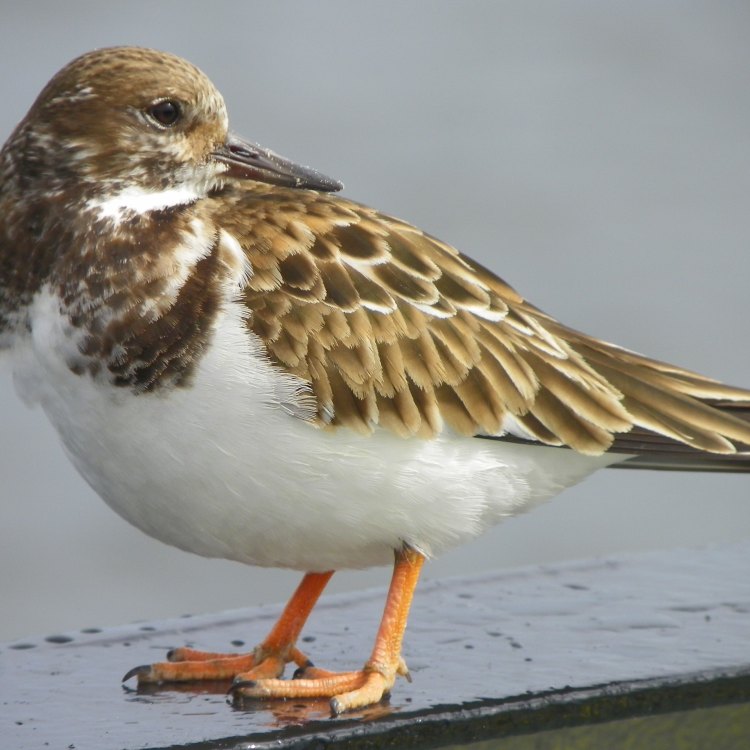
Ruddy Turnstone
- Adult Size: Medium-sized
- Average Lifespan: Around 10 years
- Reproduction: Monogamous
- Reproductive Behavior: Nest on the ground, lay 3-5 eggs
- Sound or Call: Melodious call
- Migration Pattern: Migratory
- Social Groups: May form small groups
- Behavior: Active forage for food, often seen probing the sand or turning stones
- Threats: Habitat loss, pollution, disturbance
- Conservation Status: Least Concern
- Impact on Ecosystem: Important for maintaining biodiversity in coastal habitats
- Human Use: Popular bird for birdwatching
- Distinctive Features: Distinctive black and white patterning, orange legs, and a slightly upturned bill
- Interesting Facts: Can flip stones to uncover hidden prey, known for their elaborate courtship displays
- Predator: Various birds of prey
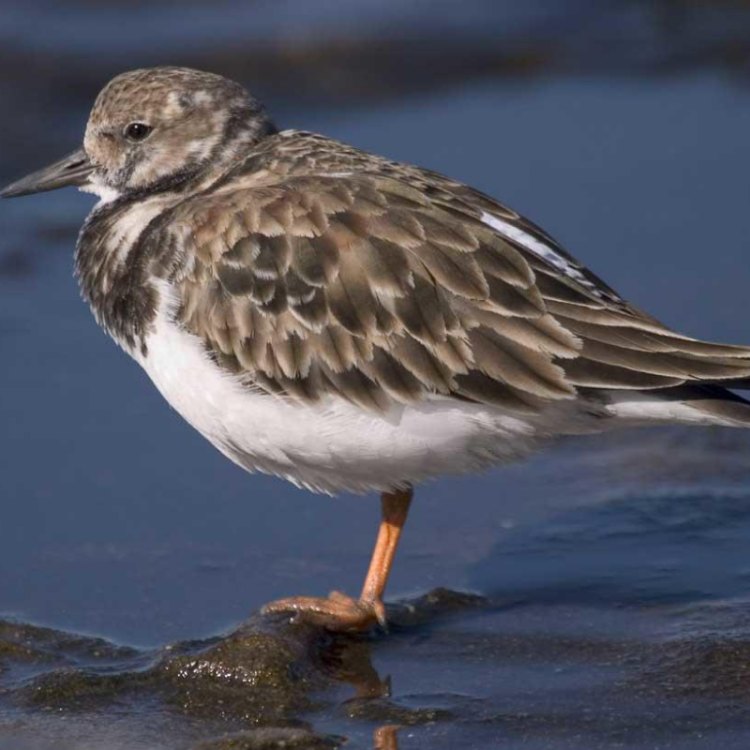
Arenaria interpres
The Fascinating World of the Ruddy Turnstone: Uncovering the Secrets of this Migratory Shorebird
A medium-sized bird with a melodious call, the Ruddy Turnstone may seem unremarkable at first glance. But this migratory shorebird, with its distinctive black and white patterning, orange legs, and slightly upturned bill, has a rich history and a variety of unique traits that make it a fascinating creature to study.In this article, we will delve into the world of the Ruddy Turnstone and uncover some of its secrets, from its reproductive behavior to its impact on the ecosystem and its interactions with humans.
The Basics:
The Ruddy Turnstone (Arenaria interpres) is a medium-sized shorebird, measuring about 8-9 inches in length and weighing around 4-5 ounces PeaceOfAnimals.Com. It is found in coastal areas around the world, including North and South America, Europe, Asia, and Africa. Its scientific name, "Arenaria interpres," is derived from latin words meaning "sand" and "interpreter," fitting for a bird that spends most of its time foraging in the sand.
Lifespan and Reproduction:
On average, Ruddy Turnstones live for around 10 years in the wild. They reach maturity at around two years of age and typically breed once a year. Like many other birds, Ruddy Turnstones are monogamous, forming a pair bond that lasts for the duration of the breeding season.
Their reproductive behavior includes nesting on the ground and laying 3-5 eggs in a shallow depression lined with vegetation. The female is responsible for most of the incubation, which lasts for about three weeks. Once the eggs hatch, both parents will care for the chicks until they are ready to fledge, usually within a few weeks.
Sounds and Calls:
Ruddy Turnstones have a melodious call that has been described as a series of clear, sweet whistles Rainbow Grasshopper. It is often used by individuals to communicate with each other or to defend their territory. During the breeding season, males may also perform a courtship song, consisting of a complex series of trills and whirrs.
Migration Patterns:
The Ruddy Turnstone is a migratory bird, traveling long distances every year to breed and winter in different locations. In the Americas, they can be found from the Arctic Circle to the southern tip of South America. In the eastern hemisphere, they breed in the tundra and taiga regions of Canada, Russia, and Scandinavia, and overwinter in coastal areas of Europe, Africa, and southwestern Asia.
Social Behavior:
Ruddy Turnstones are mostly solitary birds, but during the non-breeding season, they may form small groups with other shorebird species. They are highly territorial during the breeding season, defending their nesting sites and foraging territories from other birds.
Behavior and Foraging:
These birds are highly active and are known for their constant movement in search of food. They are active foragers, using their bill to probe the sand for small invertebrates, including insects, crustaceans, and mollusks. They are also skilled at flipping over stones and shells to uncover hidden prey, hence the name "turnstone."
Ruddy Turnstones can often be seen running along the shoreline, constantly turning stones and probing the sand for food. They are also known to scurry along rocky shorelines or docks, foraging in crevices and cracks for food.
Threats to the Ruddy Turnstone:
Like many other shorebirds, the Ruddy Turnstone faces a number of threats, mainly related to habitat loss and human disturbance. Coastal development, including the construction of resorts and marinas, has significantly reduced the amount of suitable habitat for these birds. Pollution, such as oil spills, can also negatively impact their food sources and breeding sites.
Human disturbance, especially during the breeding season, can cause abandonment of nests and chicks. This is because Ruddy Turnstones will often leave their breeding ground if they feel threatened or disturbed. It is essential for humans to be mindful of their impact on these birds and to take steps to protect their habitats and breeding sites.
Conservation Status and Ecological Impact:
Despite these threats, the Ruddy Turnstone is currently classified as "Least Concern" on the IUCN Red List of Threatened Species. This is thanks to its wide distribution and large population size.
But beyond its conservation status, the Ruddy Turnstone also plays an important role in maintaining biodiversity in coastal habitats. They are key members of the sandy beach ecosystem, controlling the populations of small invertebrates and serving as a food source for larger predators, such as various birds of prey.
Interactions with Humans:
Ruddy Turnstones may not be as well-known as other birds, but they are a popular species among birdwatchers. Their distinctive markings and active foraging behavior make them a joy to observe in the wild. Many birding hotspots, especially along coastlines, offer opportunities to see these beautiful birds in their natural habitat.
In addition to their value for birdwatching, Ruddy Turnstones have also been a valuable species for human use in the past. In Europe, they were traditionally hunted for food and were also used in falconry. Today, they are mainly used as research subjects, with scientists studying their migration patterns and behavior.
Interesting Facts:
1. Elaborate Courtship Displays: During the breeding season, male Ruddy Turnstones will perform elaborate courtship displays, including running in circles, bowing, and fluffing out their feathers. These displays are thought to help attract a mate and strengthen the pair bond.
2. Flip-Stoning: As mentioned earlier, Ruddy Turnstones are skilled at flipping stones and shells to uncover hidden prey. This behavior is also observed in other shorebirds, but turnstones have been found to be the most efficient at it.
3. Global Travelers: Ruddy Turnstones have one of the longest migration routes of any shorebird, with some individuals traveling over 15,500 miles every year.
4. Different Breeding Habits: In different parts of their range, Ruddy Turnstones have been observed using different breeding strategies. In some areas, they may use old nests of other birds, while in others, they may build their own nest from scratch.
Predators:
Ruddy Turnstones face a variety of predators in the wild, including larger birds of prey, such as falcons, eagles, and hawks. They have also been found to be susceptible to predation by mammals, such as foxes and raccoons.
In some areas, Ruddy Turnstones may also face threats from introduced predators, such as feral cats and dogs, which can significantly impact their nesting success.
In conclusion:
In conclusion, the Ruddy Turnstone may appear to be an unassuming bird, but it is a species with many unique features and behaviors that make it a fascinating subject for study. From their distinctive black and white markings to their skilled foraging techniques and global migrations, these birds have plenty to offer for those interested in learning more about avian life.
However, as with many other species, the Ruddy Turnstone faces threats to its survival, mainly due to human activities. It is important for us to understand the impact we have on these birds and take steps to conserve their habitats and protect their populations. We must work together to ensure that this beautiful species continues to thrive and grace our coastlines for generations to come.
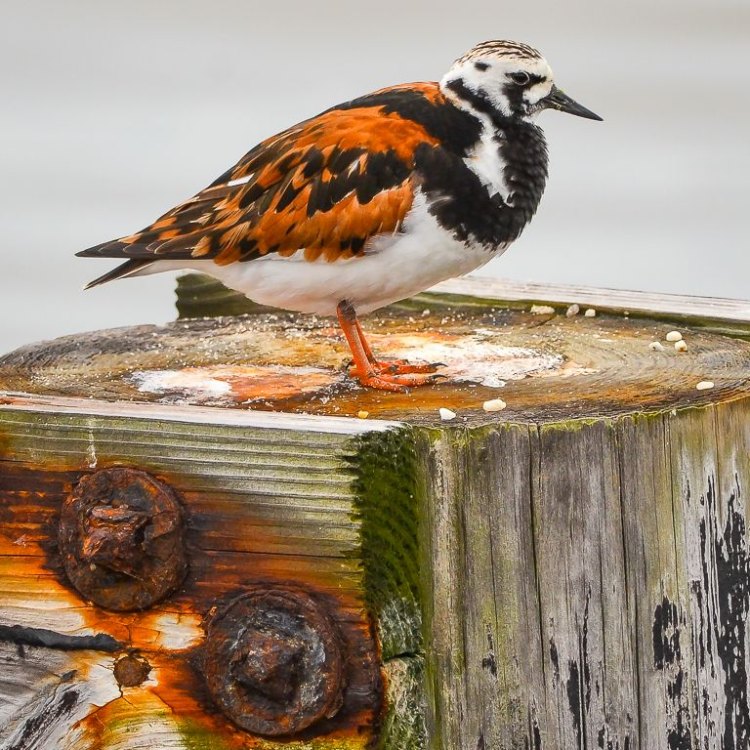
The Fascinating World of the Ruddy Turnstone: A Versatile Coastal Bird
Disclaimer: The content provided is for informational purposes only. We cannot guarantee the accuracy of the information on this page 100%. All information provided here may change without prior notice.

